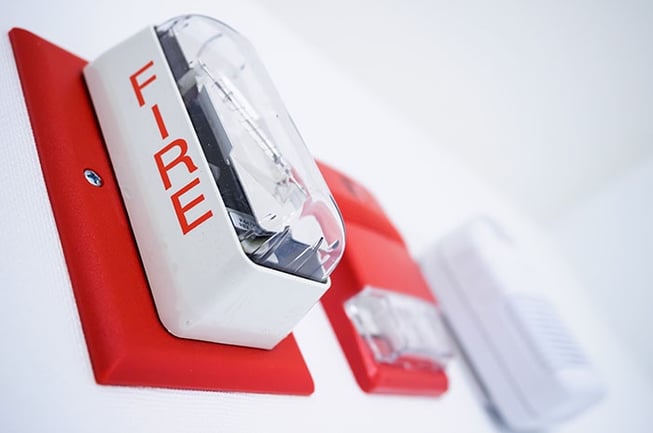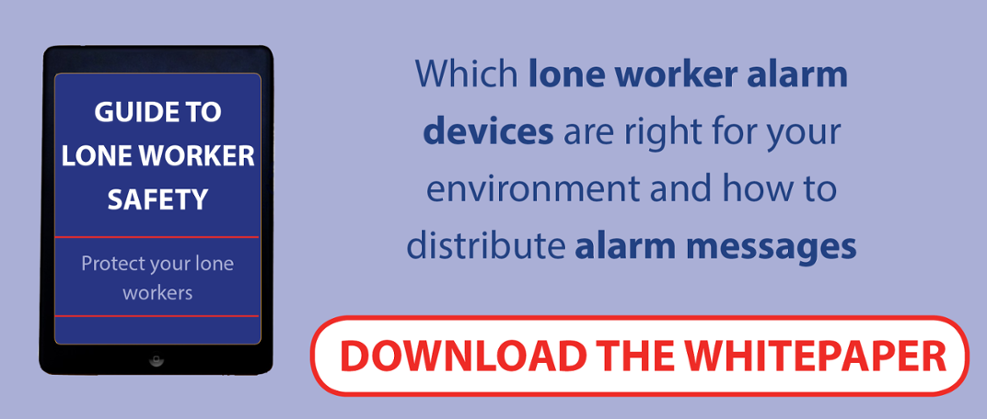
Since lone workers work without supervision, they are exposed to a much greater risk than employees working side-by-side with others. The biggest reason for this lies in the simplicity of the fact that lone workers work…well, alone. With no one else around, it can be scary if something happens to them.
When an accident occurs, you want the response to happen quickly. Not only to ensure that the employee is safe and taken care of, but you need to make sure that your company isn’t deemed liable due to any sort of negligence.
Luckily, there is a multitude of different ways to protect these staff members. From the buddy system to manual check calls to alarmed lone worker systems. When one of these safety systems is in place, the best thing to do in case of an accident is for everyone in the company to respond quickly. Remember, how you respond can mean the difference between life and death.
However, it has been found that many businesses admit to taking 30 minutes or more to just identify that there has been an accident – let alone get to them and respond. Here are 5 different ways to work on shortening alarm response times.
1. Ensure that Lone Worker Safety is a High Priority
Sometimes it can be hard to balance everything that goes into running a successful business. But in order to take care of your people, so they can continue taking care of you, you need to prioritize their safety. Responsibility should be clearly defined and you should know what the plan is for all procedures with your team. Since lone worker accidents are usually much harder to identify than others working in your building, make sure you do the following:
-
Have routine checks for any accidents or missing persons that may have been missed or unreported.
-
Have an incident-response expertise member within each team.
-
Have someone or some team on call for accident reporting or oversight to ensure that all accidents can be managed and responded to quickly.
-
Ensure that your response team have the right technology in place to communicate effectively and where necessary capable of calling the police or ambulance service in a time sensitive manner.
2. Make Sure That Everyone Knows Proper Protocol
By far the easiest way to ensure fast response times is to make sure that all health and safety managers keep their team informed. When every person understands how to use whatever system is in place for your lone workers, it makes things run a little more efficiently. Some ways to ensure everyone stays up to date on the latest protocol are:
-
Have bi-weekly or monthly safety meetings where any questions can be raised or any changes can be informed.
-
Participate in practicing protocols in role-playing to estimate actual response times and try to shorten them. This works great because it allows you to see where your team is falling short and how the group works best together.
-
Practice until it becomes an automatic second nature for people to respond in the most efficient way.
Click here to read more about lone workers
3. Consider Having a Lone Worker System that Tracks the Location of Employees
In today’s day and age, some people may be uncomfortable with the idea of wearing location-monitoring devices. But for lone workers, it could mean the difference between life and death. The advances in technology have allowed workers to not only alert someone that there has been an accident, but also allow them to send their location. Some benefits of having this kind of system in place include:
-
Know where all your workers are when an alarm is raised.
-
Gives managers and employees more confidence and security.
-
In case of a severe accident, where a lone worker may lose communication, they can quickly send an alert for help without having to explain to others how to find them.
-
Let’s your employees know that you care about their safety.
4. Be Familiar With the Risks of Your Lone Worker’s Jobs
If you are familiar with what could go wrong, you are able to create emergency response plans that are tailored to many different possibilities. If you know exactly what to do for each given possibility, your responses become automatic and everything will happen much more quickly than if you needed to stop and think about what to do. The response becomes involuntary and thus, much faster.
5. Make Sure that Employees are in Good Health
One thing industries may not realize that is critical in avoiding accidents in lone worker systems is the employee’s health before getting to work. When employees come to work not feeling 100%, they are far more likely to suffer from a work related accident. Make sure that your employees know that they won’t be penalized for taking a sick day, or put a system in place where they could opt for less dangerous work when they feel unwell.
At the end of the day we all know how important is to make sure that we know how many of our workers are operating remotely or in an isolated environment but we also need to know how to make sure that their safety is optimized. By setting up an alarm system and being mindful of the things we can do to shorten response time, we could all work together to save a life.





